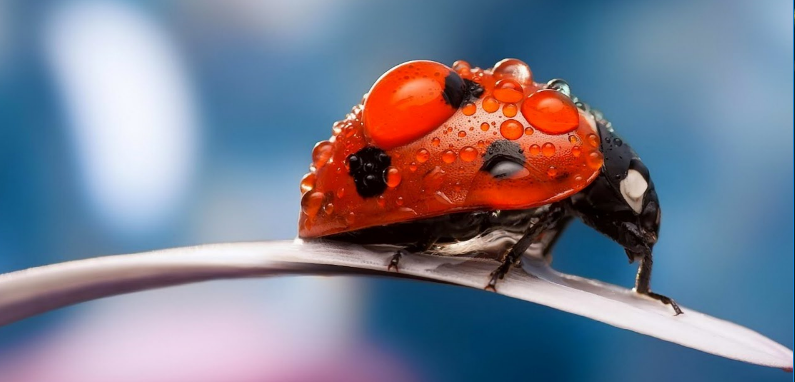The early morning in summer is one of the best times to take photographs of insects. The sunlight is still soft and slants gently through the slightly damp underbrush where I find my subjects sleeping. Insects are still slow at this hour, and often covered in dew.
If I want to capture an image of an insect covered in dew, I have to be careful of the fragile droplets that dot their antennae, wings, and legs -they can disappear in an instant. So I move slowly through the undergrowth, careful not to disturb the environment more than I have to. This is true even when I click the shutter button of the camera, everything must be performed carefully.
Early summer can be quite damp, and it is important to dress for the weather and carefully choose what gear to take. I wear clothes that will dry quickly, and boots. As for my gear, this also depends on what the weather is like. However, I always take my Nikon D300S, Tamron macro lens 180, Tamron macro lens 90, and my Sigma 18-50 macro lens. Additionally, I will take a tripod for use in natural light and my Nikon R1C1 macro flash kit. The use of the flash helps to highlight insects’ compound eyes and the shape of the dew. To keep it sharp, use a high shutter speed.
If you leave your photography site in the early evening and want to return the next day, you can mark the position of insects to make it easier to find them early in the morning of the next day. This is because once most insects have settled down for the evening, they will not move during the night. This means that you can easily find them the next day.
When photographing insects be sure not to alter the environment to improve your photos. Do not dig for insects, cut away plants, or anything else that may alter the natural environment. Also take care that you do not harm the insect you are photographing – each life, no matter how small, is important.












